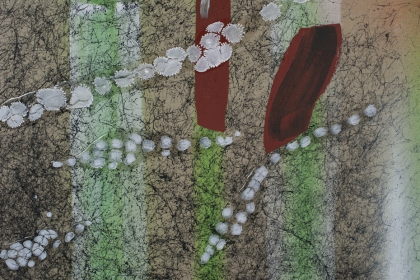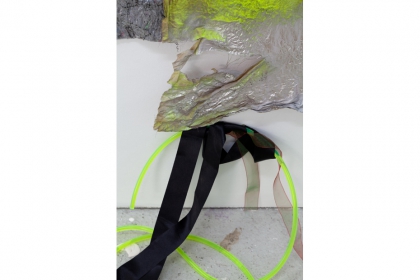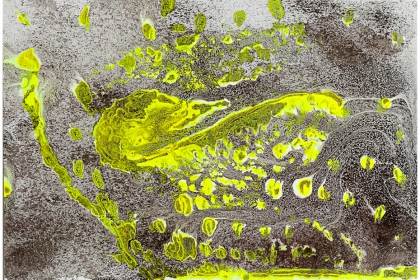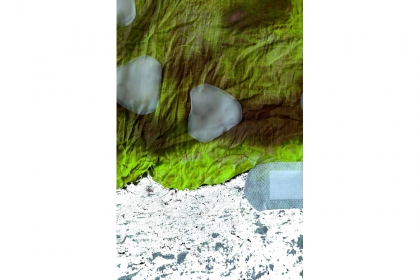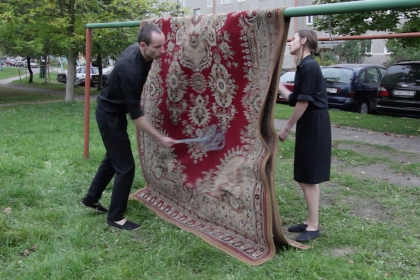(True) passing by (through) paintings
There is a remarkable equivocalness noticeable in the work of Marie-Fleur Lefebvre (°1982, Neuilly-sur-Seine, France), which is in principle distinctively ‘contemporary’. Looking at her abstract paintings, seems for a viewer in the first place a very physical way of looking. It is a looking that is in nature a purely tactile looking, that denies on first sight all classical ‘semiotics’.
On the one hand, the viewer is coached in a soft but resolute manner through a resourceful labyrinth of the most diverse painterly techniques - from monumental, roughly expressive gestures, over subtle almost figuratively readable interventions, towards a more undistinguished, ephemere and tactile graphical writing. Lefebvre’s work demonstrates an enormous diversity in materiality – as well in its own imagery as towards its painterly medium – that stays at the same time consequently loyal to her own artistic vocabulary. Because of such ‘open consequent’ position towards her medium, Marie-Fleur Lefebvre creates an open interpretation platform, which is very easily accessible, and in which the viewer can take all the time he needs for reflecting and investigating the individual emotions these canvases could evoke. This open interpretation platform enables Lefebvre at the same time to create the possibility of making a connection between the individual emotive spectrum of the viewer, and that of her own.
Because in essence, this would be the fundamental goal of her paintings. Lefebvre applies a sort of ‘peinture semi-automatique’, which balances subtly between free improvisation and image-control – within which she investigates a whole range of hyper personal and emotional fields of interest. And indeed, this individual accumulation of diverse emotive semiotics, is as diverse as her painterly tools she applies for this.
On the one hand, this emotive discourse directs itself towards an almost therapeutic self-examination into her own positioning compared to the dark side of female eroticism, or, in general, towards the more dirty side of human emotionality, without however losing the light, frivolous and relativizing aspect of it. On the other hand, from a more emotional socially point of view, Lefebvre investigates her own individual positioning towards the fact how people nowadays handle their own emotional interests. Indeed, it seems that in contemporary society, many people seem to just ‘pick up’ their individual emotions ‘en cours de route’ to then deploy them ‘ad hoc’ into their daily lives. This contemporary ‘detached’ way to deal with emotional information, seems to determine a whole generation, who no longer dares or wants to root itself within one holistic emotional situation, but rather concentrates itself on retching diverse emotional anchors in as much diverse as temporary havens, in order to formulate its emotional identity, while ‘passing by’ so to speak.
And it’s this ‘picking up emotionality’ that determines Marie-Fleur Lefebvre’s imagery consequently, as well painterly as individual-personally. Seen from this respect, one could call her paintings ‘emotional informal’ by analogy with ‘L’Art Informel’ which arised in France roughly between 1945 and 1960, and which stated that through the ‘formless’ deed of the painterly process whether or not coincidentally ‘readable’ symbols could emerge. In the case of Marie-Fleur Lefebvre’s painting, these symbols are not (only) universal-figuratively readable, but to all the more individual-emotionally.
And this, indeed, not only for herself as a painter, but also - and maybe even more - for you, the viewer.
(T.V., May 2015)

